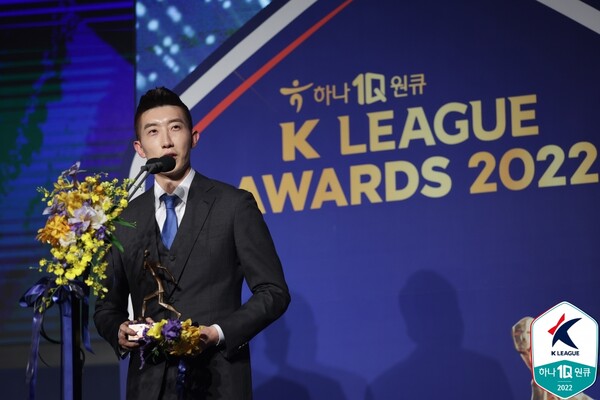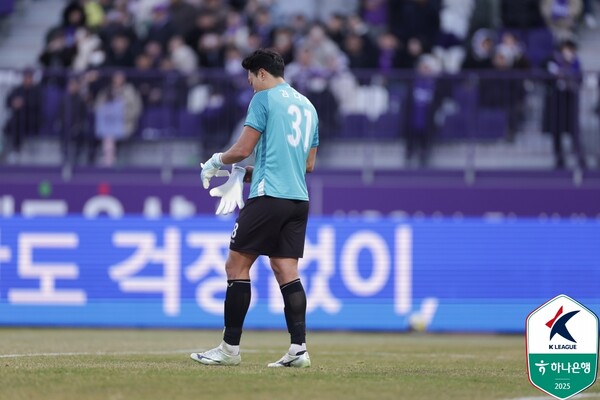
In a landmark move that rewrites a core principle of South Korean football regulation, the K League has formally ended its 27-year ban on the registration of foreign goalkeepers. Beginning with the 2026 season, clubs in both K League 1 and K League 2 will once again be permitted to sign and field non-Korean players in the goalkeeping position.
The decision was ratified at the Korea Professional Football League’s (K League) third board meeting of 2025, held on June 19 at the Korea Football Association headquarters in Seoul.
A Rule Rooted in Domestic Development
The ban, first introduced in stages beginning in 1996 and fully enforced by 1999, was initially designed to address a growing concern: the overwhelming reliance of K League clubs on foreign goalkeepers in the 1990s. At the time, with only eight teams in the league, most clubs fielded non-Korean keepers as automatic starters, many of them hailing from Eastern Europe or the former Soviet Union.
The influx of foreign talent in goal created a bottleneck for domestic development. Fearing a lost generation of Korean goalkeepers, the league imposed restrictions on match appearances for foreign keepers, which eventually escalated into a complete registration ban.
This policy, though restrictive, had far-reaching effects on Korean football. It created the space for domestic goalkeeping icons such as Lee Woon-jae, Kim Byung-ji, and Choi Eun-sung to flourish. Their rise helped secure Korea’s defensive stability during its golden generation, notably in the run to the semi-finals at the 2002 FIFA World Cup.

One Notable Exception: “God’s Hand” and the Naturalised Path
Despite the rigid framework, one exceptional case stood out—Valeri Konstantinovich Sarychev, a Soviet-born goalkeeper who would later be known in South Korea as Shin Eui-son (신의손), literally “God’s Hand.”
Born in 1960 in the Tajik SSR, Sarychev began his professional career with Pamir Dushanbe before transferring to Ilhwa Chunma (now Seongnam FC) in 1992, during the final years of the league’s open policy on foreign keepers. With his imposing frame, acrobatic reflexes, and commanding presence, he quickly became a fan favourite and earned the nickname “Shin Eui-son” for his seemingly supernatural saves.
Sarychev was named K League Best Goalkeeper for three consecutive seasons from 1994 to 1996, leading Ilhwa to three straight league titles and an Asian Club Championship in 1995. His performances became the benchmark for the position.
When the league eventually barred foreign goalkeepers in 1999, Sarychev was already nearing 40. However, he took an extraordinary step—naturalising as a South Korean citizen in 2000, legally adopting the name Shin Eui-son and becoming eligible to register as a domestic player. Though he played sparingly thereafter, his case remained a powerful symbol of both the talent foreign goalkeepers could bring and the extreme lengths required to circumvent the restriction.
Even after retirement, Sarychev stayed in Korea as a goalkeeper coach, influencing a new generation of keepers. His legacy loomed large over the ban’s decades-long tenure.

Why the Ban Has Finally Been Lifted
More than a quarter-century later, the K League Board has concluded that the original rationale for the ban no longer holds. The league has grown to encompass 25 professional teams across two divisions, significantly expanding the number of available playing opportunities. Meanwhile, the domestic development infrastructure has matured, and clubs are under greater pressure to compete on continental stages.
The Board cited two primary reasons for the reversal. First, the goalkeeper restriction has led to an inflation in domestic goalkeeper salaries, with demand outstripping supply. Second, the modern context—with greater tactical diversity and an emphasis on international competitiveness—requires more flexibility in roster construction.
From 2026, the K League Competition Regulations will delete the clause stipulating that “goalkeepers must be Korean nationals.” Clubs will now be able to use one of their existing foreign player slots for a goalkeeper, should they choose to do so.
Additional Competition Reforms
Alongside the headline change, the league board also approved several complementary reforms. The K League 2 matchday squad size will be increased from 18 to 20, aligning with global practices. Additionally, eligibility for the league’s Young Player of the Year award will be expanded to include homegrown players—those who have progressed through a club’s youth system—regardless of their initial registration status.
These changes reflect a broader modernisation effort by the K League, one aimed at enhancing player development while also making the competition more attractive to global audiences and investors.

A Return to Global Standards
The lifting of the foreign goalkeeper ban restores the K League to global norms, where restrictions by position are rare. It also signals a willingness to re-evaluate long-standing assumptions in Korean football governance.
The rule that once propelled Korean keepers to the forefront of Asian football is now being replaced by open competition and market dynamics. In the process, it reopens the league’s doors to talents who, like Sarychev before them, might otherwise never be seen.
As of 2026, South Korean football enters a new chapter—one where a club’s safest pair of hands could once again come from beyond its borders.
관련기사
- Poyet turns down CSKA Moscow offer as he leads Jeonbuk’s stunning K League resurgence
- K League Legend Lee Dong-gook Appointed Technical Director of New Club Yongin FC
- Tactical Collapse: Why Ulsan's Back Three Failed at the Club World Cup
- Former FC Porto Midfielder Bruno Costa Joins Gyeongnam FC
- TACTICS: Why Ulsan’s Improved Back Three Still Couldn’t Overcome Fluminense
- Ahn Jung-hwan Named Director of South Korea’s New ‘UNIV PRO’ University Football Initiative
- India Target 33 Players in Passport Revolution – A New Power Rising in Asia?
- Former Augsburg Forward’s Move Collapses Amid Sexual Assault Allegations — Daejeon Under Fire Over Cheon Seong-hoon Controversy
